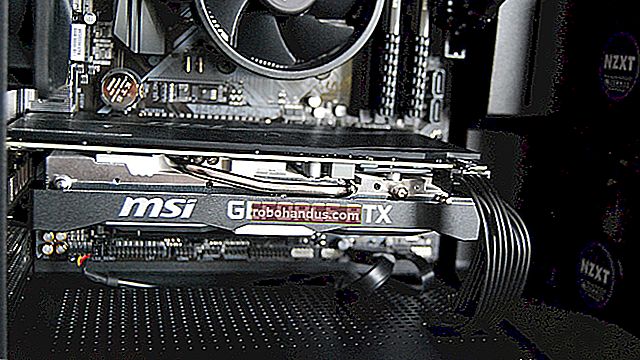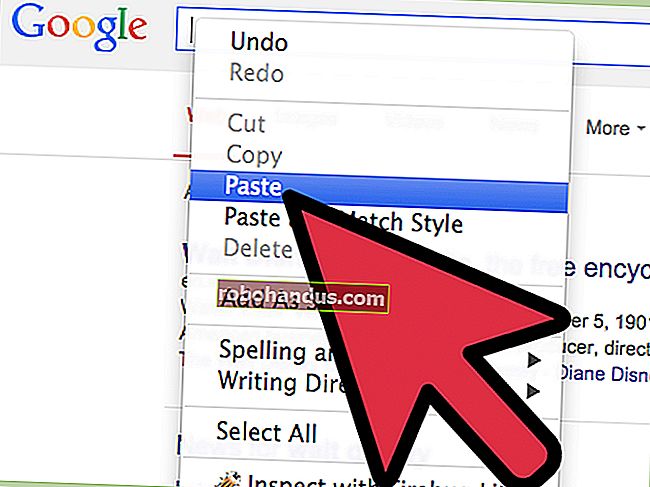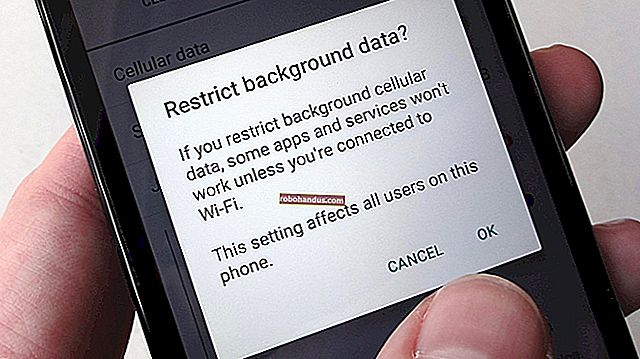Windowsでアイコンをカスタマイズする方法

アイコンをパーソナライズすることは、PCを独自のものにするための優れた方法です。Windowsでアイコンをカスタマイズするさまざまな方法を見てみましょう。
関連:任意の画像から高解像度のWindows7アイコンを作成する方法
Windowsには、選択できる組み込みのアイコンがいくつかありますが、IconArchive、DeviantArt、Iconfinderなどのサイトからダウンロードできるアイコンも数え切れないほどあります。これらにはすべて無料のアイコンがたくさんあります。また、気に入ったものが見つからない場合は、任意の画像から高解像度のアイコンを作成することもできます。
夢のアイコンを入手したら、安全な場所に保存します。これらのプロセスの中には、PCの特定の場所にとどまる必要があるものがあります。他の場合では、何かがうまくいかず、それらを再適用しなければならない場合に備えて、おそらくそこにそれらが必要になるでしょう。
デスクトップアイコンを変更する(コンピューター、ごみ箱、ネットワークなど)
このPC、ネットワーク、ごみ箱、およびユーザーフォルダなどのアイコンはすべて「デスクトップアイコン」と見なされますが、最新バージョンのWindowsではすべてがデスクトップに表示されません。Windows 8および10には、ごみ箱以外のデスクトップアイコンは表示されません。また、Windows7でもすべてが表示されるわけではありません。完全な概要については、Windows 7、8、または10で欠落しているデスクトップアイコンを復元するためのガイドを確認してください。
ただし、これらのアイコンがシステムの他の場所でどのように表示されるかを変更することはできます。これを行うには、「デスクトップアイコン設定」ウィンドウにアクセスして、これらのアイコンのオンとオフを切り替えたり、関連するアイコンを変更したりする必要があります。Windows 10では、[設定]> [カスタマイズ]> [テーマ]> [デスクトップアイコンの設定]からこのウィンドウにアクセスできます。Windows 8および10では、[コントロールパネル]> [パーソナライズ]> [デスクトップアイコンの変更]です。
「デスクトップアイコン」セクションのチェックボックスを使用して、デスクトップに表示するアイコンを選択します。アイコンを変更するには、変更したいアイコンを選択し、「アイコンの変更」ボタンをクリックします。

「アイコンの変更」ウィンドウでは、組み込みのWindowsアイコンから任意のアイコンを選択するか、「参照」をクリックして独自のアイコンファイルを見つけることができます。

独自のアイコンを参照する場合は、任意のEXE、DLL、またはICOファイルを選択できます。ファイルを選択すると、「アイコンの変更」ウィンドウに、選択したファイルに含まれているアイコンが表示されます。必要なものをクリックして、[OK]をクリックします。ここでは、「このPC」アイコンを、デスクトップというよりもラップトップのように見えるアイコンに変更します。

アイコンを変更すると、ファイルエクスプローラー、デスクトップ、およびフォルダーを開いたときにタスクバーで使用される新しいアイコンが表示されます。

また、変更を元に戻したい場合は、いつでも「デスクトップアイコン設定」ウィンドウに戻り、元に戻すアイコンを選択して、「デフォルトに戻す」をクリックできます。

フォルダアイコンを変更する
フォルダのアイコンを変更することは、物事をきれいにするだけでなく、重要なアイテムに注意を喚起するための良い方法でもあります。フォルダアイコンを変更するには、変更するフォルダを右クリックして、「プロパティ」を選択します。

フォルダのプロパティウィンドウで、[カスタマイズ]タブに切り替えて、[アイコンの変更]ボタンをクリックします。

「アイコンの変更」ウィンドウでは、組み込みのWindowsアイコンから任意のアイコンを選択するか、「参照」をクリックして独自のアイコンを見つけることができます。

独自のアイコンファイルを参照する場合は、任意のEXE、DLL、またはICOファイルを選択できます。ファイルを選択すると、「アイコンの変更」ウィンドウに、選択したファイルに含まれているアイコンが表示されます。必要なものをクリックして、[OK]をクリックします。ここでは、このフォルダのアイコンを赤いアイコンに変更して、目立たせています。

そして、プロパティウィンドウに戻り、「OK」をクリックします。

The folder should now show up with the new icon.

This feature works by creating a hidden Desktop.ini file inside the folder that contains a few lines of data something like the following:
[.ShellClassInfo] IconResource=D:\Walter\Documents\Icons\Oxygen-Icons.org-Oxygen-Places-folder-red.ico,0 [ViewState] Mode= Vid= FolderType=Generic
This is one of the cases where you absolutely must keep the ICO file in whatever location you had it when you applied the icon. Put it somewhere you know you won’t delete it first, or make the ICO file hidden.
And if you want to fine-tune how folders look and operate on your PC, you should also explore how to customize folder views with Windows’ five templates and how to customize folder view settings in Windows.
Change the Icon for a Type of File
You can also change the icon for specific file types (those that end in certain extensions) so that all files of that type use the new icon. Why bother to do this? Suppose, for example, you use an image editing program that uses essentially the same icon for all the different types of image files it supported—PNG, JPG, GIF, and so on. You might find it more convenient if each of those file types used a different icon, so they were easier to distinguish—especially if you keep multiple file types in the same folder.
Unfortunately, there’s no built-in way to do this in Windows. Instead, you’ll need to download a free tool to do the job: File Types Manager by Nirsoft. We’ve got a complete guide to using File Types Manager to change the icon for a certain file type, so if you think this would be useful for you, give it a read!

The one type of file that File Types Manager is not good at handling, though, is executable (EXE) files. For that, we’ve got another free tool recommendation: Resource Hacker. And of course, we also have a guide on using it to modify the icon for an EXE file.
Change the Icon of Any Shortcut
Changing the icon for a shortcut in Windows is also pretty simple and works the same whether it’s a shortcut to an app, folder, or even Command Prompt command. Right-click the shortcut and choose “Properties.”

On the “Shortcut” tab, click the “Change Icon” button.

This opens the standard “Change Icon” window we’ve seen a couple of times already. Choose one of the default icons or browse to any EXE, DLL, or ICO file that contains icons. After making and applying your selection, you’ll see the new icon in File Explorer, on the Desktop, or on the taskbar if you have your Shortcut pinned there.

If you want, you can even customize those shortcut icons further by removing (or changing) the arrow overlays or preventing Windows from adding the “- Shortcut” text.
Change the Icon of Apps that Are Pinned to the Taskbar
Icons that are pinned to your taskbar are really shortcuts—they just don’t have the arrow overlay and “- Shortcut” text normally associated with shortcuts. As such, you can customize their icons in nearly the same way that you customize any shortcut icon. You just need to keep a few things in mind:
- You can only customize the icons of apps that are actually pinned to the taskbar. If the icon is only on the taskbar because the app is currently running and it isn’t pinned there, you can’t customize it. So, pin it first.
- If an app is pinned, but is currently running, you’ll need to close the app before you can change the shortcut icon.
- Just right-clicking a pinned app shows you the app’s jumplist. To access the regular context menu instead, hold the Shift key down while right-clicking the icon. Choose “Properties” from that menu and then the rest of the process will be familiar to you from the previous section.

Change the Icon of any Drive in File Explorer
There’s no simple built-in way to change the icons for drives in Windows. That doesn’t mean you can’t do it though. The easy way is to use a free app named Drive Icon Changer. There’s also a way that works a bit differently and involves a little Registry editing. You can read all about both methods in our guide to changing drive icons in Windows.

Drive Icon Changer is the easiest way, though you can do it from the registry if you’d prefer not to use extra software.
Hopefully, this gives you enough information about changing icons that you can make things look just the way you want them.






